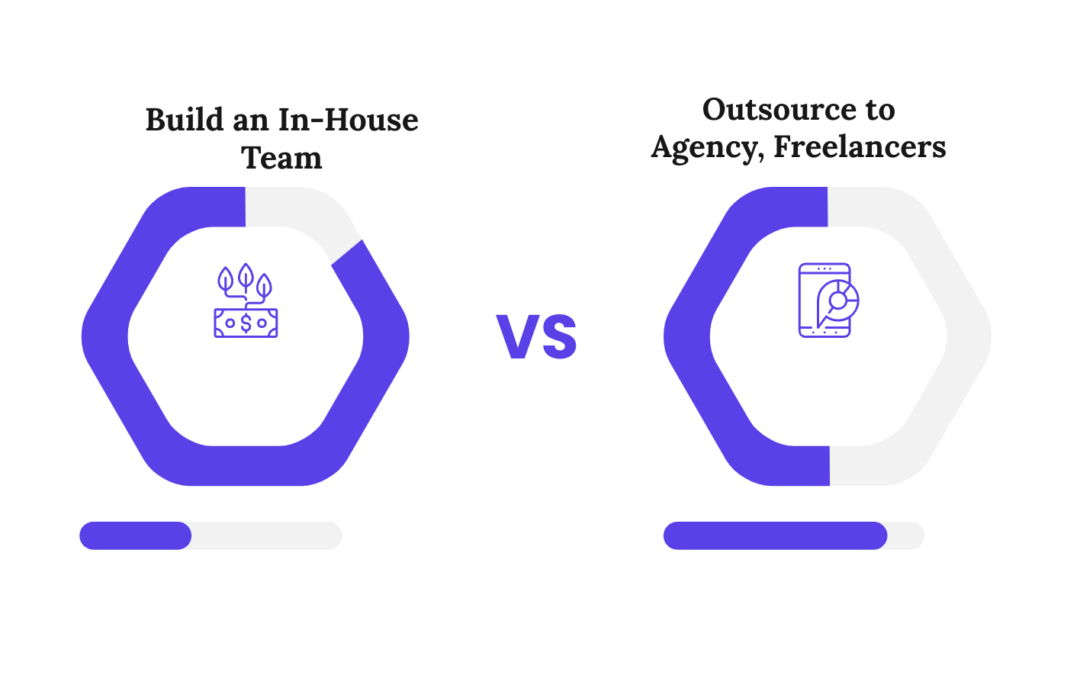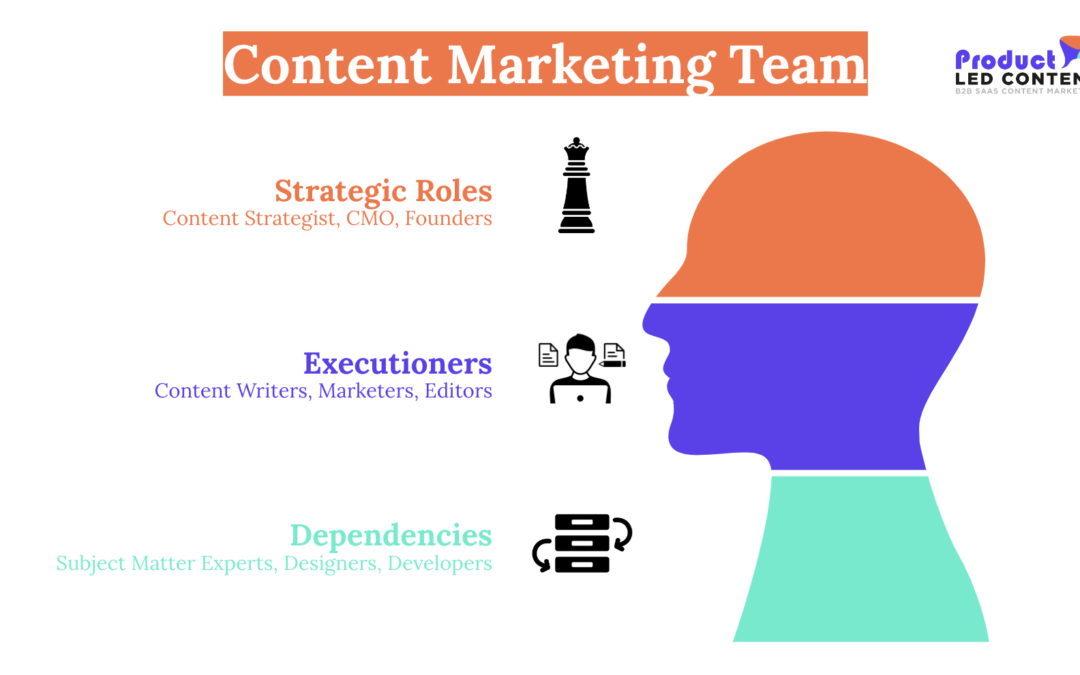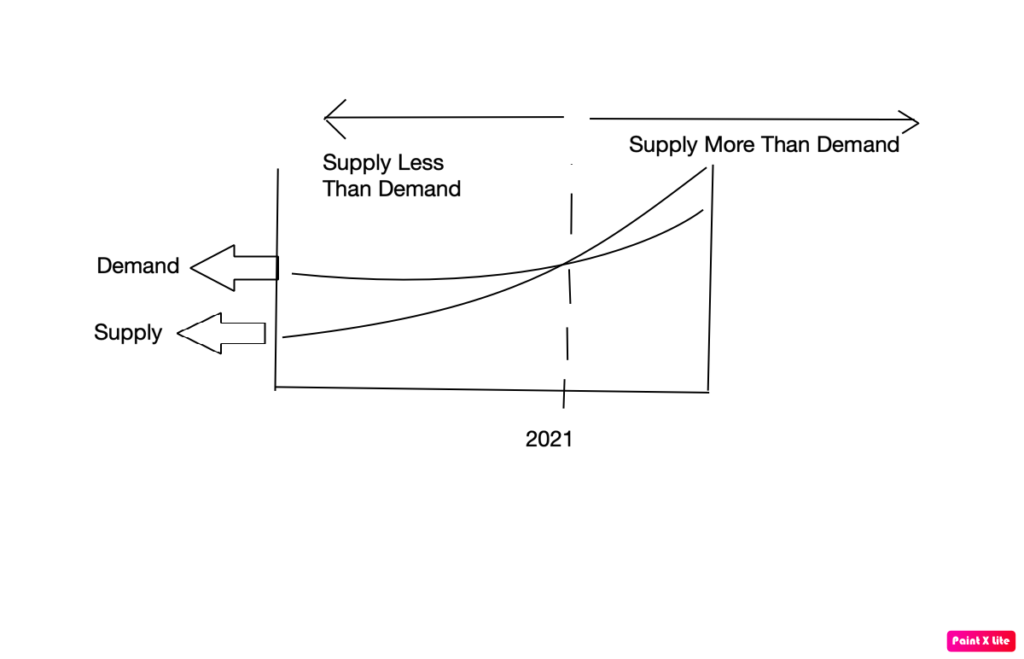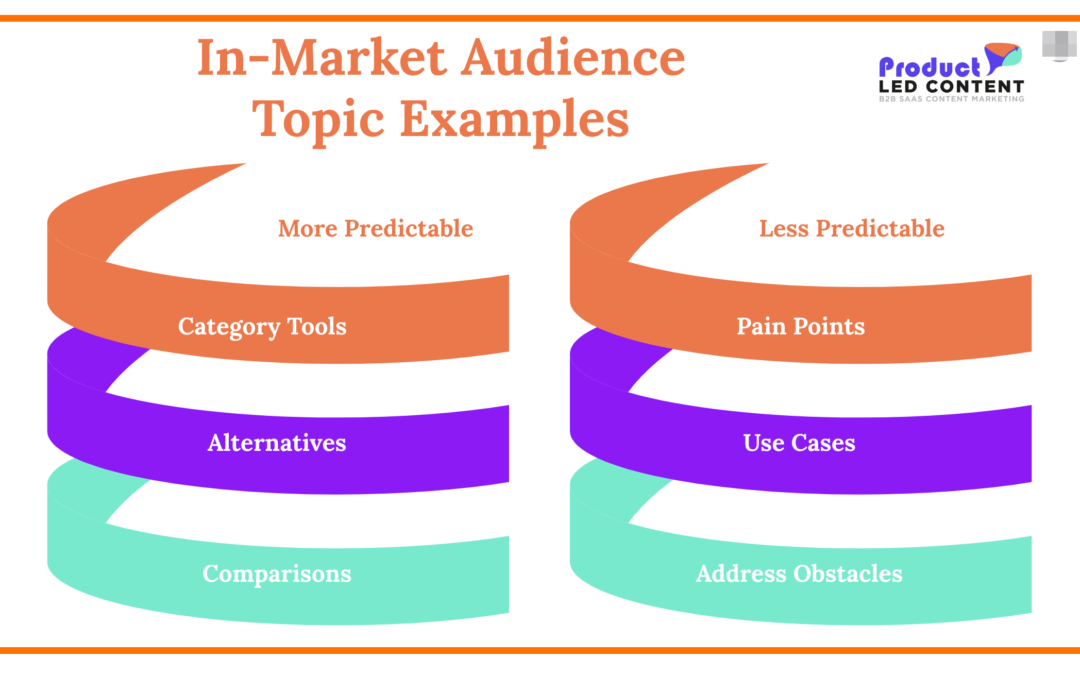
Content Marketing: Building An In-House Team Vs Outsourcing to Agency Vs Freelancer Vs Product Led Content
Hiring for marketing is the toughest job in startups. It can make or break your startup.
When starting content marketing operations, you have two choices: Build a team in-house or Hire an external party (can be freelancers or agencies).
I’ve been helping startup founders to start their content marketing programs for many years. The first question that I usually encounter from them is whether they should build an in-house team from scratch, hire freelancers, or work with an agency.
Some other variations of this question are:
- Should I Hire A Full-Time Employee Or Outsource Our Content Marketing
- Does it Make Sense to Outsource our Content Marketing?
- Should I Build Our Own Content Team or Outsource?
If you are thinking about whether to hire a full-time employee or an agency or freelancer to do content marketing for your B2B SaaS product, you are in the right place. I’ve been where you are now.
While I was looking for help running content marketing during my last job, I explored all these options. I’ve worked with many freelancers as well as many well-known agencies across the world, and I think you’ll benefit from my experience.
Building A Content Team In-House
Hiring can definitely work, but it is tough. Since most of the founders and even marketing heads are not from content backgrounds, it is difficult to judge if the person you are hiring possesses the right set of skills.
Want to build an in-house team, you can take our content team-building service.
Who is involved in running content marketing operations?
Before you go about building your content marketing team, let’s see who is involved in running content marketing operations.
We have discussed this in detail in this post. Here is a summary of the post.
- Content writers: Technical content writers are foot soldiers of your content marketing operations. They write articles for your blog. The content writers in the content marketing team must be well versed in the 3 key pillars of content writing for marketing purposes: target audience (TA), product, and market.
- Content marketers: Marketing is the core job. They distribute content via channels such as SEO, social media, and community promotions in different groups on LinkedIn, Slack, Reddit, etc.
- Content strategist: Responsible for the overall content marketing, from making strategies, to overseeing content creation and distribution
- Editors: They work on the articles and give feedback to writers. Mainly responsible for content quality.
- SMEs: Subject matter experts are an important but often ignored piece of the content marketing team. Though they don’t work full time, their inputs are necessary. They provide contextual examples and help writers write posts relevant to the target audience.
- Designers: Graphic designers create visual content pieces for blog posts and their promotions.
- Developers: Developers help the content team by helping with making changes to the website for SEO and UX improvement purposes.
Earlier (till a few years ago), a content writer was sufficient to run content marketing operations at small companies. Now, after the funding boom in the SaaS space, every startup wants to do content marketing because of the huge benefits it offers.
Because of this, the competition is very high. Now, just hiring a writer is not enough. To cut through the noise, you should be able to distribute it.
You have to be very strategic in your approach. It requires huge planning and someone experienced to plan for different situations and get the results quickly because content marketing is a slow channel. So, having content marketers and strategists is a must. It’s not optional anymore.
If you are going this way, keep in mind the following things.
- Hiring is time-consuming
Hiring is time-consuming. It takes months to build a content marketing team. As content marketing takes a good amount of time to show results, waiting to build a full content team from the start can prove to be a wrong decision.
Moreover, a significant amount of time goes into training them. They need to train about the product, market, and target audience. Until they get a complete understanding of all these, it’s highly unlikely that they’ll produce content that brings leads.
- Probability of failure is high (when nobody in your content marketing team has hands-on experience)
Even if you build a complete team there is a good chance that things won’t work out if you don’t have previous experience in content marketing or you won’t take the help of experts in hiring.
Most companies don’t provide training to writers about products and target audiences. So writers fail to contextually include the product in posts.
Not only that it is hard to build authority or trust among the target audience if your writers don’t know about them, the disconnect heavily impacts the conversion rate for sign-up/demo.
Outsourcing Your Content Marketing to Freelancers or Agencies
Outsourcing is not about throwing money and getting results. Content marketing is not a money problem. If you don’t have the right strategy and execution, you will fail even after spending a considerable amount of money on content marketing.
This is one of the main reasons why we like content marketing. Unlike paid ads, the guy with deep pockets does not always win!
There are two cases where you want to outsource.
- You don’t have internal expertise. If none in your team has a content background, you would want to take external help. Even marketing heads with a proven track record can’t help you as content marketing is very dynamic. If they have got success with content marketing in their previous job, it doesn’t mean that they will get into your company as well. Content marketing is rapidly evolving. It has changed a lot in the last 2 years. The strategies that worked in 2018 won’t work now. You wouldn’t want to take chances with content marketing. The cost of doing it wrong is very high. So, you can take expert help.
- You want to focus on your core job. It takes a lot of time to build a content team from scratch; you may not have the time to search for good content writers, marketers, editors, and strategists. It will take many months. Furthermore, building a team from scratch distracts you from your core job. Hence, to save time, you may want to outsource your content marketing. Considering the slow nature of the channel, it may be a good strategy to engage external parties specializing in content marketing.
- For saving money. When you are building an in-house team, there is a minimum cost involved. Further, you can’t just get rid of the team when things don’t work out. There is always an emotional connection and bonding with the team. On the other hand, you can find external people in all ranges of prices—starting with a few thousand.
Now, let’s see the pros and cons of two main outsourcing options: freelancers and marketing agencies.
- Outsourcing to Freelancers
When it comes to outsourcing, it’s extremely rare to find a freelancer who can take care of your content marketing end to end. You can at most outsource the content writing part.
Here are the key points you need to know about outsourcing to freelancers.
- Finding good freelancers is difficult. A good freelancer can help you immensely. But they are hard to find. If you are starting out, it is difficult to hire them without spending a lot of money or committing a regular work.
- Working with freelancers requires huge time from your end. To make the engagement worth it requires a huge time commitment on your end. You cannot just give a topic and a few keywords to a freelancer and expect them to write high-quality content pieces for you. You would still need a content strategist in-house as there is a lot of work involved before the after the writing process, like creating content briefs, reviewing written drafts, giving feedback, SEO optimization, etc.
- They are economical. Freelancer writers come in various prices and generally charge based on word count. My advice is to do a test piece to check the quality of writing.
- Issue with professionalism. One major problem with many freelancers is a lack of professionalism. It reflects in everything they do, from their invoices to communications. We don’t blame them. They are working solo—and they work with multiple clients—so you may face deadline issues. Note that this represents a general sentiment. I’m not saying that all freelancers are non-professionals. There are very good freelancers but the charges can shoot up high.
- Outsourcing to a Digital Marketing Agency
Today, there are hundreds of digital marketing agencies in the world. Let’s see what to expect when you go out to work with a digital marketing agency.
- Most teams have no specialization. There are large digital marketing agencies that do everything in digital marketing: PPC, email, social media, SEO, content marketing, and PR.
Their content marketing team works for multiple niches with no specialization. They work with both B2C as well as B2B clients. They market SaaS products, eCommerce, and services in all.
Their main goal is the optimization of time. So they treat content like a pipeline. There is less customization according to your specific requirements.
- Rapidly scale your content outputs. If you need a very high volume of content in a short period of time, such agencies can be a good fit. They can churn content at a high velocity.
- There can be quality issues: Many agencies charge an exorbitant amount based on their reputation. You have to ask who would be actually working on your project.
While working with an agency, the content quality was so poor that I had to rewrite all the content pieces. Furthermore, their content strategist was only passing my feedback to the writer and then the writer’s replies to me—and not taking responsibility for the quality.
I found that the writer has a lot of misconceptions, and we need to discuss those first before he writes anything.
So, I thought it was better to give feedback directly to the writers, but they didn’t allow me to. Instead, they asked me to send voice notes, and write detailed comments when the same thing could have happened over a video call.
It was an unnecessary step, especially since the account manager is not from the content background. Why? Because they don’t have any value. In fact, they diluted the feedback which I was giving for the writer.
Though I like to suggest changes in Google Docs, I (as a content strategist) want to explain the reasons/why behind those comments so that writers don’t repeat the mistakes.
As you can see there are pros and cons to each option. There is another option, i.e working with a specialized agency. We (Product Led Content) faced these issues at the beginning of our career and hence started our content marketing agency.
About Us: A Specialized Content Marketing Agency for B2B SaaS Products
Now, I’d like to give you a glance at what it is like to work with us.
We (Product Led Content) are a specialized B2B SaaS content marketing agency that works with only a handful of clients. We only work with clients if we see there is a mutual fit.
We take responsibility from strategizing to creating content to distribution to analytics and improvement—basically, we are accountable for getting leads, sales, and revenue from content.
We have a full team of specialists:
- Content strategists
- Editors
- Content marketers,
- Designers
- Writers
Further, we have access to all the important tools needed for running robust content marketing operations.
Our approach is very collaborative. We work together as an extension of your marketing team. We don’t work as an outside third-party vendor.
We have deep insights that can save you months or even years. We specialize and work with multiple clients, so we have data, and we can find insights quickly. We can see patterns in what is working and what is not.







